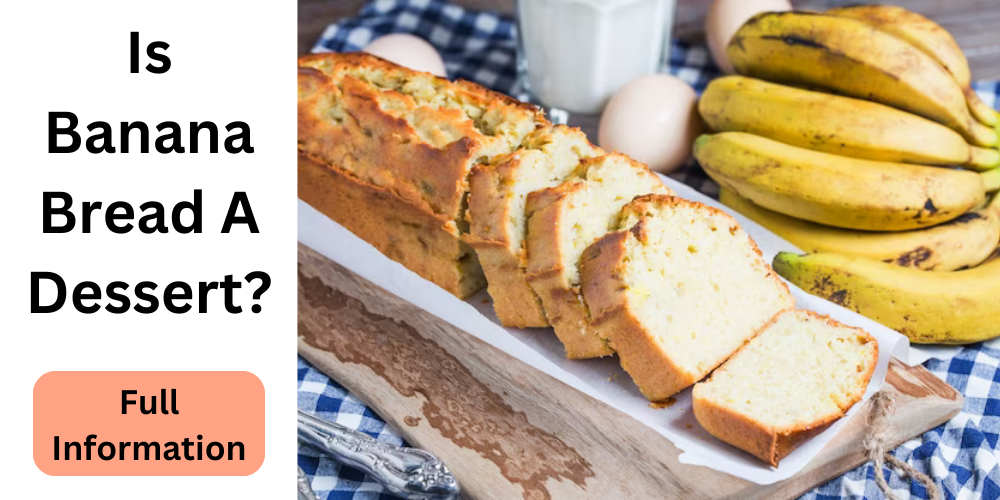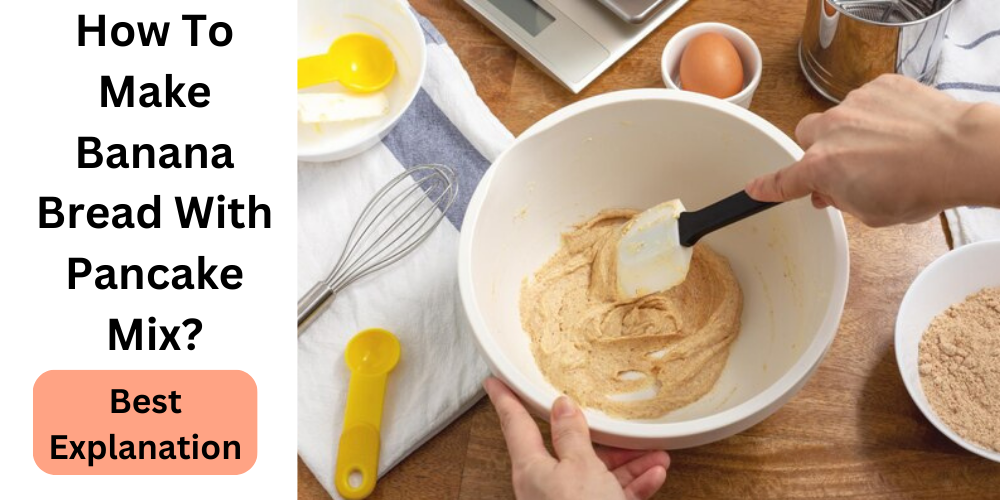Banana bread is a darling exemplary that has endured for a long period in kitchens from one side of the planet to the other. There’s nothing very like the smell of ready bananas and warm, heated bread filling your home. But what happens when your banana bread turns out dense, instead of the light and fluffy delight you were hoping for? Why Is My Banana Bread Dense? In this article, we’ll dive into the science behind this culinary conundrum. Explore common mistakes that can lead to dense banana bread. And share tips to ensure your next loaf is a heavenly, fluffy creation.

Why Is My Banana Bread Dense?
To comprehend the reason Why Is My Banana Bread Dense. It’s fundamental to dig into the study of baking. The surface of banana bread is affected by a few elements, including the fixings you use and the procedures applied during the baking system.
One key fixing that assumes a crucial part in deciding the thickness of banana bread is the actual bananas. Ready bananas are the superstar, yet you should recall. Their readiness influences the dampness content and in general surface of the bread. Ready bananas with a higher dampness content can produce denser bread. While utilizing bananas that are too green could bring about a drier part.
Moreover, the kind of flour you use matters. Regular flour is a well-known decision for banana bread. Utilizing cake flour or a mix of various flours can yield lighter and fluffier outcomes. The protein content in the flour influences the bread’s design. Flours with lower protein content produce a more delicate morsel.
The raising specialists, like baking pop and baking powder, are pivotal in making the ideal ascent and surface. To an extreme or tad, these raising specialists can prompt issues with the bread’s thickness. Appropriate estimation and cautious thoughtfulness about the recipe are fundamental.
Common Mistakes Leading to Dense Banana Bread
Now that we’ve explored the science behind banana bread, let’s identify common mistakes that can result in dense loaves:
- Overmixing the Batter: Mixing the batter can overdevelop the gluten in the flour. Leading to a tougher, denser texture. To avoid this, mix until the ingredients are combined.
- Using Too Many Bananas: While ripe bananas are the essence of banana bread. Using too many can increase the moisture content, resulting in a denser texture. Stick to the recommended quantity in your recipe.
- Incorrect Leavening Agent Ratios: Using too much or too little baking soda or baking powder can affect the bread’s rise. Follow your recipe to maintain the right balance.
- Improper Measuring of Ingredients: Accurate measuring of ingredients, especially flour, is crucial. Using too much flour can lead to a dry and dense loaf.
- Baking Temperature and Time: Baking at the wrong temperature or for too long can cause your banana bread to dry out and become dense. Follow your recipe’s instructions.
Tips for Light and Fluffy Banana Bread
Now that we’ve covered what can go wrong, let’s focus on how to make your banana bread light and fluffy:
Choose Ripe, But Not Overripe, Bananas: Select bananas that are yellow with a few brown spots, but avoid mushy or blackened ones. This balance provides the right amount of sweetness and moisture.
- Use the Right Flour: Opt for all-purpose flour or a combination of flour with a lower protein content for a tender crumb.
- Measure Ingredients: Invest in a good kitchen scale to ensure precise measurements, especially for flour and leavening agents.
- Don’t Overmix: Mix the ingredients until they are combined. Overmixing can lead to a dense texture.
- Proper Leavening Agent Ratio: Follow your recipe’s recommendations for the correct amount of baking soda and baking powder.
- Check Baking Time and Temperature: Bake your banana bread at the recommended temperature for the specified time. Use a toothpick or cake tester to ensure it’s cooked in the center.
Related Guides:
Why Did My Banana Bread Not Come Out Fluffy?
If your banana bread didn’t turn out fluffy, it’s likely due to one of the common mistakes mentioned earlier. Overmixing the batter or using too many overripe bananas can result in a denser texture. Double-check your recipe and baking technique to identify the issue and try again with the tips provided.
Why Is My Banana Bread So Dense and Wet?
If your banana bread is both dense and wet, it could be the result of using ripe bananas or not measuring your ingredients. The excess moisture from the bananas can make the bread too wet, while inaccurate measurements can lead to density. Follow the tips outlined above to correct these issues.
Why Is My Banana Bread Always Flat?
A flat banana bread can be a result of insufficient leavening agents or inaccurate measuring of ingredients. Make sure you use the right amount of baking soda and baking powder and double-check your measurements to achieve the desired rise in your banana bread.
Why Is My Banana Bread Gooey?
A gooey banana bread may state that it’s undercooked. Ensure you bake your bread for the recommended time and at the specified temperature. Using too much banana or too much moisture can also lead to a gooey texture. Adjust your recipe.
Conclusion:
Banana bread is a brilliant treat that can be delighted by everybody. Why Is My Banana Bread Dense? Except accomplishing the ideal surface can be a piece precarious. Grasping the science behind baking, staying away from normal errors. The following master tips will assist you with making banana bread that is light, feathery, and delicious. Remember that practice makes perfect, so don’t be discouraged if your first few loaves aren’t exactly what you envisioned. With time and experience, you’ll become a banana bread master, impressing friends and family with your mouthwatering creations.
Sources:
- By Semi, Why is my banana bread too dense? Posted 5 years ago




